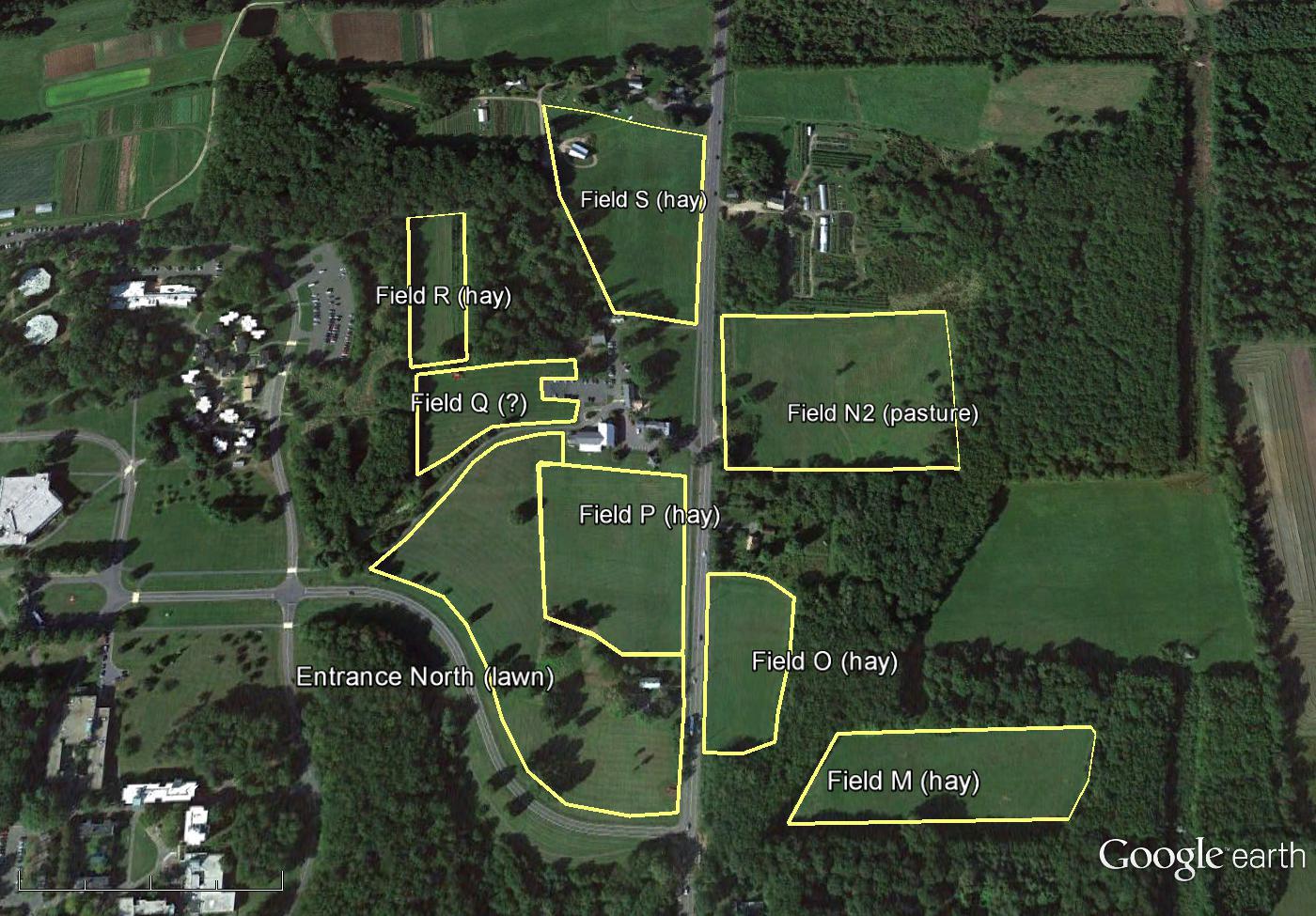Hampshire Meadowlands
Topic outline
-
Hampshire College Meadowlands Project!
Our goal is to convert mowed, manicured lawns into ecologically vibrant habitat. Hampshire President Jonathan Lash has asked us to create a plan by April 15, 2013. The plan should lay out a mix of land to be managed for hay and for habitat, with appropriate paths and activity areas, and should describe consultation and implementation steps and costs, and means of communicating the goals and reasoning involved to the community and visitors. Students, and others who may be interested, are encouraged to get involved and learn from the planning process. The plan should achieve 4 objectives:
*Reduce GHG emissions *Create ecologically appropriate habitat
*Create Teaching/learning and research opportunities *Save grounds maintenance costs.Want to get involved? Send an email to sroof@hampshire.edu to find out how you can help!
-
01 February. The Hampshire College Meadows project is now registered as a CEL1 project. Helping to restore the campus landscapecan now help you complete your Div I. Go to the CEL1 pages to sing up: https://campusengagedlearning.hampshire.edu
New discussion forums added below! Please contribute your ideas and information resources! Please enter the "Projects Description" discussion thread and add a description of how you would like to paticipate in the Meadowlands conversion project
-
Here are some key questions and research tasks:
- Identify “Potential Parcels” (PPs) for conversion (and identify which areas may be kept as manicured lawns)
- Identify current and past land uses of PPs
- Inventory current land cover and species present (plant, animal, microbes) on each PP
- Classify soil properties of PPs (soils type, organic content, microbe populations, nutrient levels, etc.)
- Identify and prioritize species which we desire to enhance (e.g., Which birds? Which grasses? Which microbes?)
- Design test plots and experiments for at least some PPs to monitor changes in species diversity, soil properties, etc.
- Develop plans to educate community on benefits of habitat conversions
- Create and implement plans to involve Hampshire and broader community in decision process
- Interface with Hitchcock Center for the Environment to align mutual land use goals
Once much of the above is completed, then …
- Create detailed long-term maintenance plans for each converted parcel
- Create specific plans for converting specific PPs to desired habitats
- Finalize the Plan for conversion of lands from manicured lawns to habitat areas by April 15
- Implement the Plan
- Sit back and watch it grow.
Faculty Resources
- Larry Winship – things with roots <lwinship@hampshire.edu>
- Brian Schultz – things that crawl <bschultz@hampshire.edu>
- Noah Charney – rare and endangered things <ncharney@hampshire.edu>
- Jason Tor – things too small to see <jtor@hampshire.edu>
- Ken Hoffman – That all important experience thing <khoffman@hampshire.edu>
- Charlene D’Avanzo – Hitchcock Center things <cdavanzo@hampshire.edu
> - Beth Hooker – Grassland, agriculture, and soil things <bhooker@hampshire.edu>
- Steve Roof – other things <sroof@hampshire.edu>
-
Click on a pushpin for field name. Click on the "Earth" button in upper right corner to get an interactive Google Earth view. For a larger map in a new window, click on "View Larger Map" below the map.
-
-

Online Info sources:
Effects of Management Practices on Grassland Birds: Bobolink:
http://www.npwrc.usgs.gov/resource/literatr/grasbird/bobo/bobo.htmMassAudubon - Grassland Birds – Background and history of grassland birds in the Northeast: http://www.massaudubon.org/Birds_and_Birding/grassland/index.php
MassAudubon - Managing Agricultural Lands for Grassland Birds:
http://www.massaudubon.org/Birds_and_Birding/grassland/agricultural.phpAdditional information from MassAudubon:
http://www.massaudubon.org/Birds_and_Birding/grassland/resources.php
U.S. Fish and Wildlife Service: Partners for Fish and Wildlife - Working to achieve voluntary habitat restoration on private lands, through financial and technical assistance, for the benefit of Federal Trust Species: http://www.fws.gov/partners/
To view information on the Silvio Conte National Wildlife Refuge:
http://www.fws.gov/r5soc/ -
-
-
-
